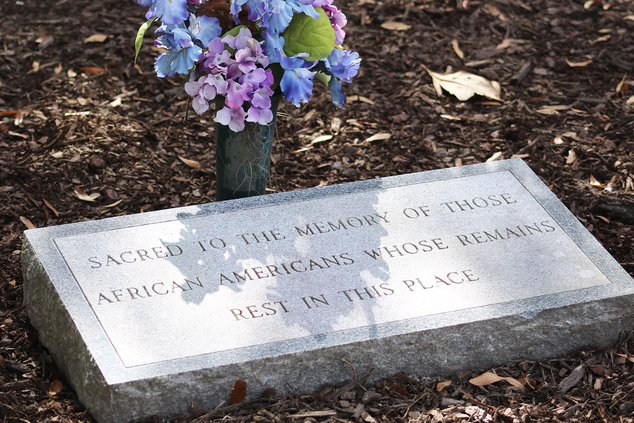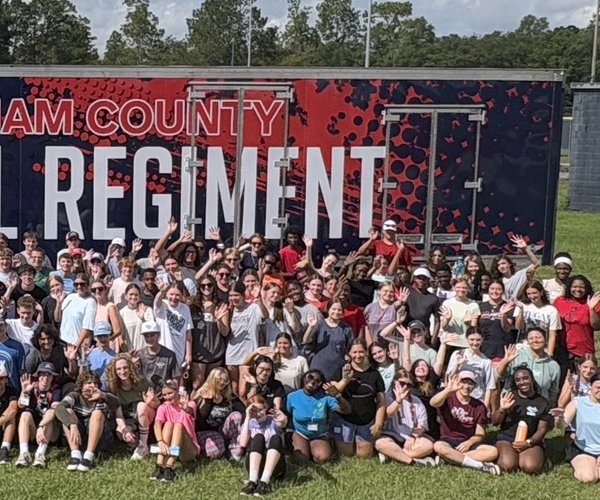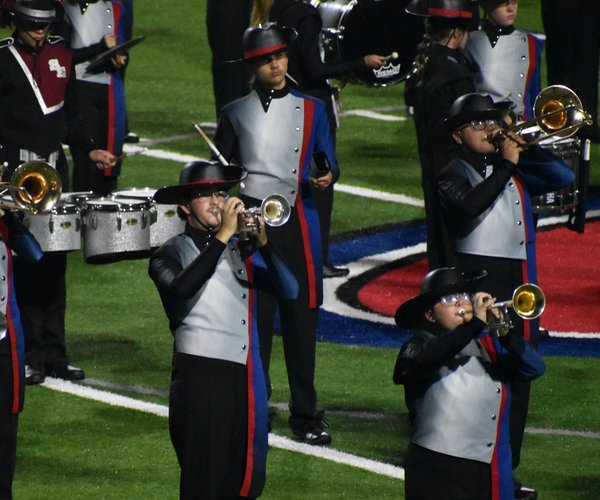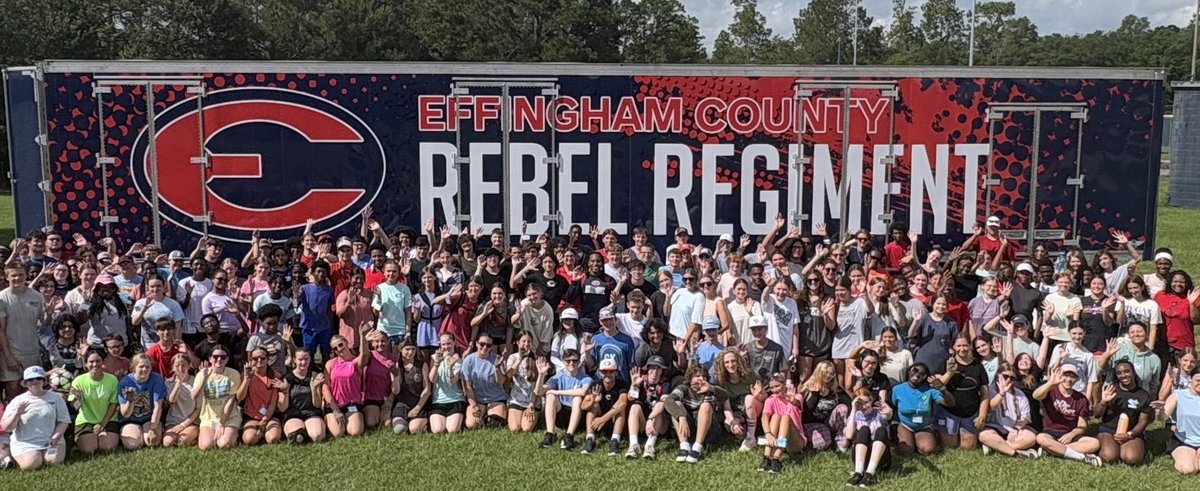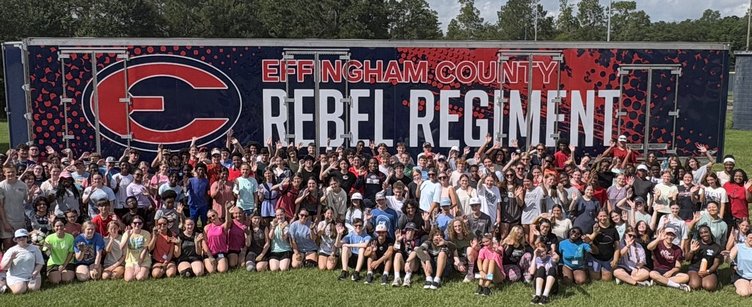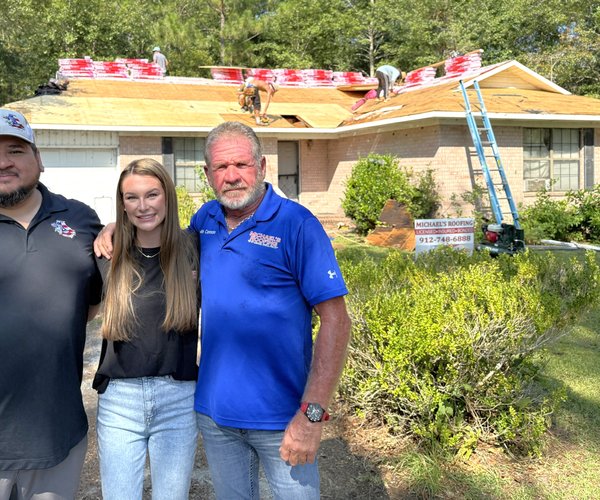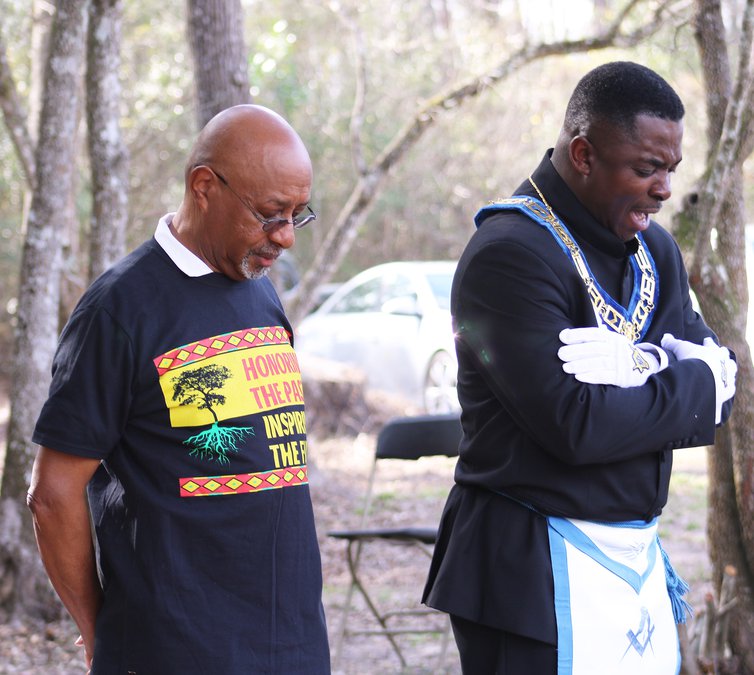
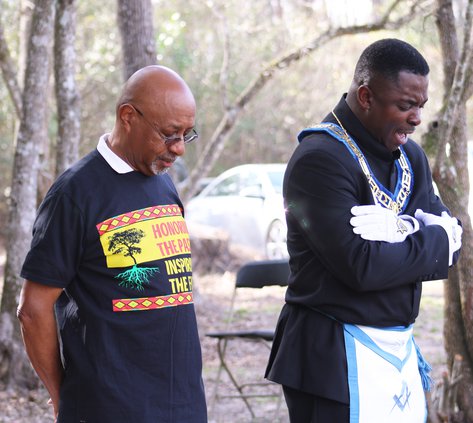
RINCON — A group of Master Gardeners and other volunteers is working diligently to help Effingham County residents cultivate an important part of history.
Led by Leroy Lloyd, the group is sprucing up the African-American cemetery next to Jerusalem Lutheran Cemetery at 2887 Ebenezer Road, Rincon. Part of the project includes removing dead trees, limbs and overgrown vegetation.
“We’ve been out here working every Thursday (since Jan. 9). In fact, we are out here today,” Lloyd said during a Thursday telephone interview. “There are about eight or nine folks out here.”
The African-American cemetery is the resting place for more than 100 nameless freed women, men and children who died tragically in 1864 at Ebenezer Creek during the Civil War.. The former slaves, unfamiliar with its deep, swift water, entered the creek after a pontoon bridge had been cut and many drowned.
Minister Kendell Roberts, citing the works of historian Theodore DeLaney, offered more details of theincident during the 2018 wreath-laying ceremony at the site.
He said, “The slaves did not understand army methods, strategy and practices,” he said. “They did not go to West Point like (Gen. William T.) Sherman and his fellow officers. Therefore, they didn’t understand what the Army was trying to accomplish through precise methods of warfare.
“As a result, the slaves continued, not knowing any better, to following the Union Army — and for good reason. If they continued to stay in the same place, they still saw themselves as slaves.”
Roberts said Gen. Jefferson C. Davis supervised the bridge-crossing operation. He said Davis was pro-slavery and openly disliked African-Americans.
“As the last of Davis’ soldiers crossed the pontoon bridge, there were more than 600 freed slaves at the rear on the other side of the creek. Then, surprisingly, Davis ordered the ropes be cut and the pontoon bridge be pulled away.”
The bridge removal sent a cry of agony through the former slaves, Roberts said, and many tried to swim across the creek to continue their pursuit of the Union troops.
Roberts read the remarks of a Union soldier who saw the calamity unfold.
“There were many ignorant, simple souls to whom it was literally preferable to die free rather than to live as slaves. As for the men, women, children and elderly who did not reach the other side of the bank, they were gathered up by (Gen. Joseph) Wheeler’s Cavalry and returned to slavery.”
Roberts said, according to Delaney’s historical account, Davis’ decision to remove the bridge had Sherman’s approval.
“The Ebenzer Creek Calamity — that’s what I call it — was the saddest moment in Sherman’s ‘March to the Sea.’ Those 600 slaves trusted Sherman’s army. They saw Sherman’s army as their ticket to freedom and they were horribly double-crossed,” he said. “The fact of the matter is that Sherman did not want to be impeded by those free slaves and Jefferson C. Davis made sure that he was not impeded by those free slaves.
“From Sherman’s standpoint, there really was no big deal about the Ebenezer Creek Calamity because he said, and I quote, ‘Jefferson C. Davis has acted honorably. He was strictly a soldier and doubtless hated to have his wagons and columns encumbered by these fallen Negroes for whom we all felt sympathy.’”
Roberts said Sherman’s primary concern was to get his troops to Savannah before their food ran out.
The fallen will be remembered at a Feb. 22 wreath-laying ceremony at the cemetery new near New Ebenezer Retreat Center. The fourth annual event will start at 2 p.m.
“I wish you could have seen this place before compared to what it is now,” Lloyd said. “We moved out large stumps and picked up a lot of debris. We still have more to do but we will finish it in the next couple months.”
Lloyd envisions a park-like setting at the site eventually. Donations are being accepted for a center monument, benches and a gate.
“I’m excited about the amount of work that we’ve done and the people who have come out to help,” he said.
With the aid of some NAACP members, the Master Gardeners intend to add native plants, flowering trees and shrubs. They also plan to keep it free of overgrowth.
The addition of a monument, benches and gate will need approval of church trustees, who have have been very supportive of Lloyd’s efforts to this point.
“The church has been cooperative and we appreciate them for that,” Lloyd said.
For more informtion, contact Lloyd at 908-406-4235 or lrlloy@planters.net.

